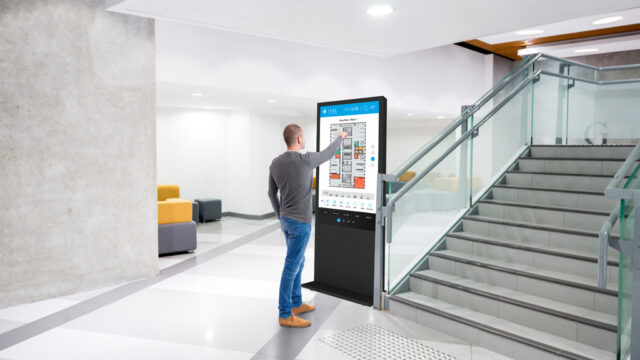As college and university campuses continue to sprawl out, it becomes increasingly challenging for new students to find their way. From a university perspective, it’s important to make campuses more navigable so that there are fewer issues.
10 Tips for a More Navigable Campus
Colleges and universities can often be large and complex campuses that can be overwhelming to navigate, especially for first-time visitors.
However, there are several ways that these institutions can make their campuses more user-friendly and easy to navigate for everyone, from students to prospective students, guest lecturers, and other visitors.
1. Intentional Signage
One of the most important ways to make the campus more user-friendly is through intentional signage. This means that the signs on campus should be designed and placed in a way that is clear and easy to understand.
For example, signs should be easily visible and use simple language to guide visitors to important locations, such as the library, classrooms, and administrative offices.
2. Digital Signage

In addition to using clear and concise signage, colleges and universities can also use technology to help visitors navigate the campus. This can include digital maps and interactive apps that provide real-time directions and information about campus buildings and services.
Digital signage makes it easy to provide real-time assistance and dynamic directions for students looking to find classrooms. If there’s a special event one day, the signage can change to help people find that specific location.
Then it can easily be shifted for a different event in a separate location the following day. By leveraging technology, institutions can make it easier for visitors to find their way around campus and reduce confusion and frustration.
3. Supplementary Resources
Another way to make campuses more user-friendly is through effective communication with students around the topic of navigating the campus. This can include providing orientation sessions for new students, as well as creating resources such as handbooks, maps, and online guides that provide information on how to navigate the campus.
4. Color-Coded Buildings and Maps
Color coding can help visitors quickly identify buildings and navigate the campus more easily. For example, academic buildings could be one color, administrative buildings another, and student services another.
This can also be reflected on campus maps, making it easier for visitors to locate their destination.
5. Consistent Room Numbering

Room numbering should be clear and consistent throughout the campus. For example, rooms on the first floor of each building could start with the number one, while rooms on the second floor could start with the number two.
This makes it easier for visitors to locate specific rooms, even if they are in a different building than they are used to. We recommend developing standard guidelines, such as the ones Xavier University uses here.
6. Accessible Routes
Institutions should ensure that their campuses are accessible to everyone, including individuals with disabilities. This can include providing accessible routes to all buildings, as well as making sure that signage is placed at an accessible height and that braille is included on signs.
7. Directional Signage
In addition to signage that identifies specific buildings and rooms, directional signage can help visitors find their way to important locations, such as parking lots, dining areas, and restrooms. This can also include directional arrows painted on sidewalks to help guide visitors in the right direction.
8. Campus Ambassadors

Colleges and universities can also use student ambassadors or staff members to help visitors navigate the campus. These individuals can be stationed at key locations throughout the campus and can provide directions and answer questions from visitors.
9. Update Signage Regularly
As the campus evolves and changes, it’s important to regularly update signage to reflect these changes.
For example, if a building is renamed or repurposed, the signage should be updated to reflect this. Additionally, if there are any temporary changes to access or routes on campus, temporary signage should be put up to guide visitors.
10. Offer Campus Tours
Providing campus tours to prospective students and their families is a great way to introduce them to the campus and show them around important locations.
These tours can be led by current students, and staff members, or even automated through the use of interactive maps and virtual tours. Campus tours can also be used to highlight unique features of the campus, such as historic buildings or green spaces.
Putting it All Together
Every college campus is different. Depending on the location, size, existing layout, and available resources, you face an array of unique circumstances. Make sure you take the time to consider each of these factors so that you can make smart decisions that benefit students, faculty, and campus guests and visitors alike.







